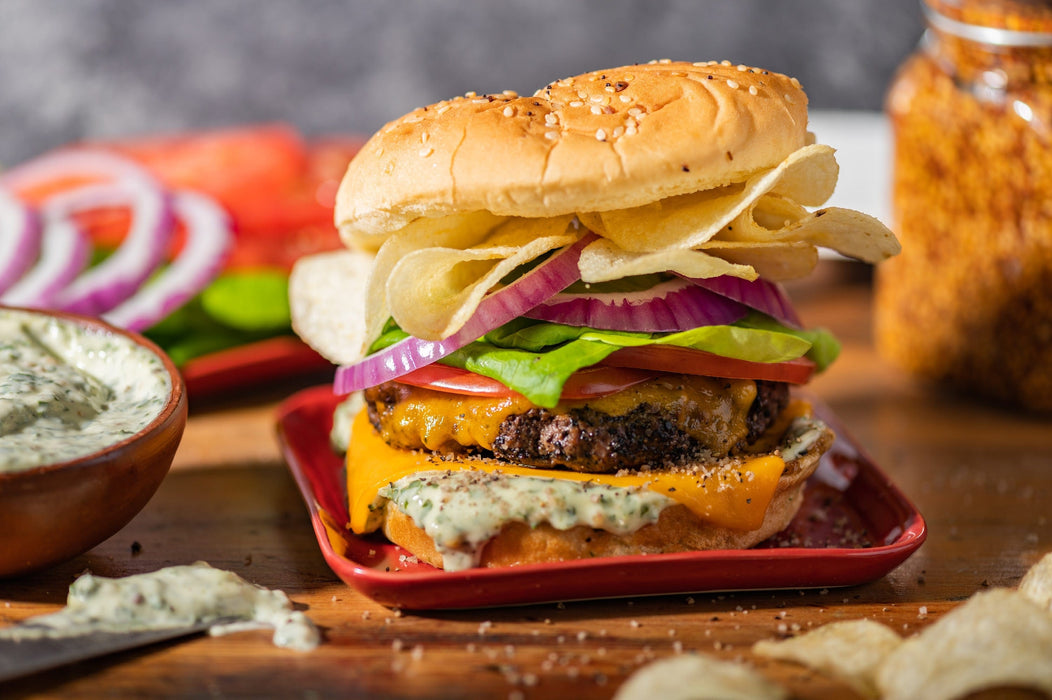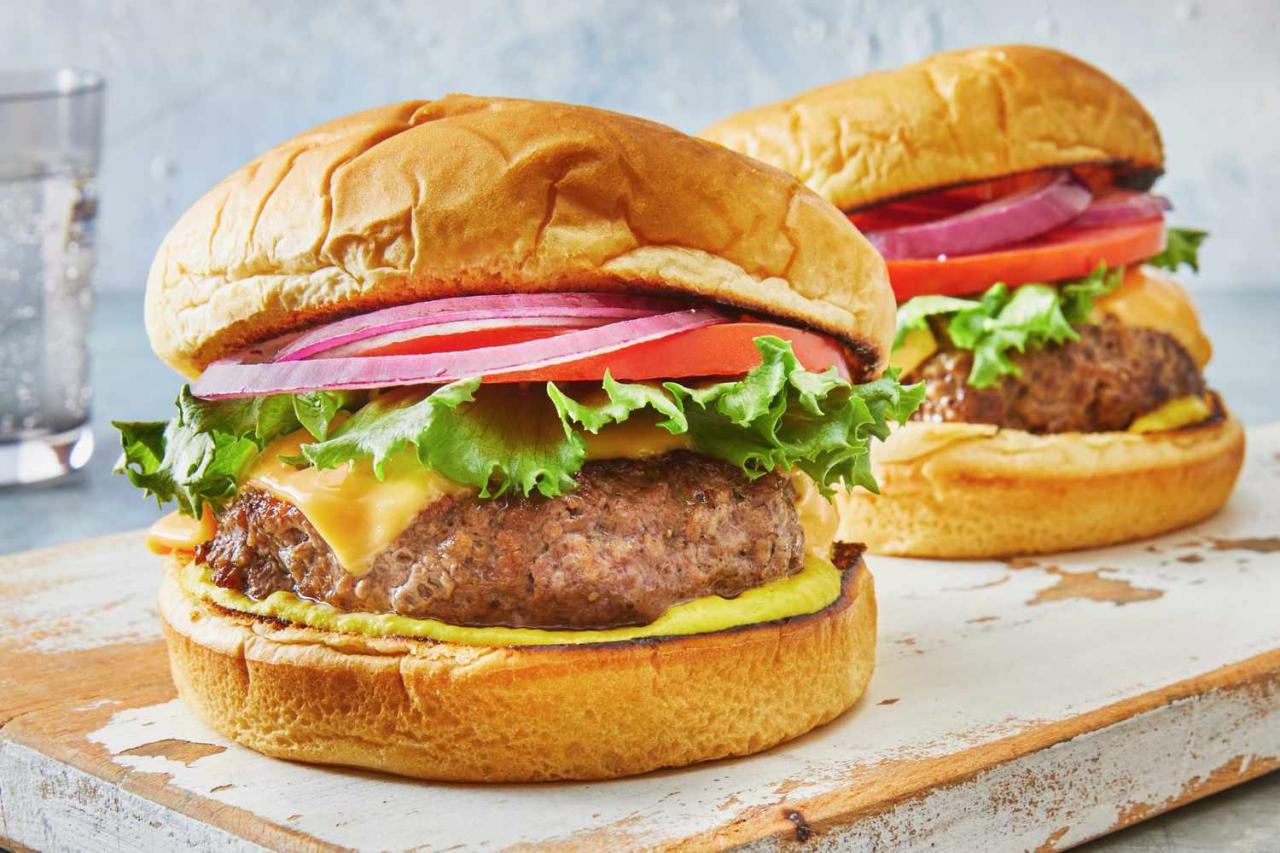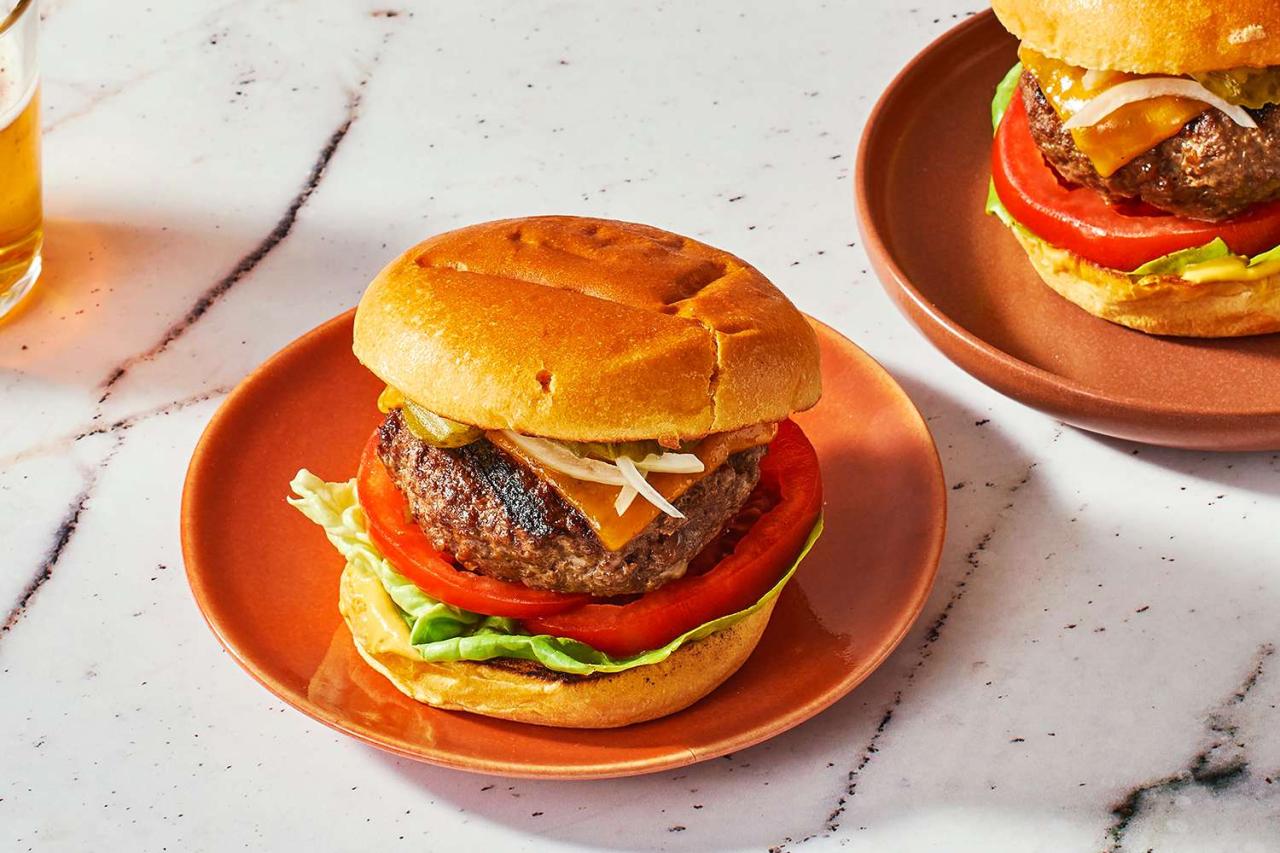Picture the bustling streets of New Orleans, where the air is thick with jazz notes and the aroma of spices invites you to indulge in its storied food culture. It’s here, amidst this sensory collage, that the inspiration for a Creole-styled meat-free burger takes root.
Imagine the challenge and excitement of capturing the essence of traditional Creole flavors while embracing a plant-based ethos. The motivation behind crafting such a burger springs not only from a desire to create a dish that’s kind to our planet but also from an intrigue to meld classic and contemporary tastes. The goal is to offer both vegetarians and meat-lovers alike a burger that doesn’t just replicate the texture of meat but excites the palate with a melody of spices and herbs synonymous with Creole cuisine.
The creation of a Creole Styled Meat with a Creole twist is a joyful ode to sustainability and health, without sacrificing the indulgence of flavor. It’s a testament to the belief that mindful eating can be a feast for the senses, offering a guilt-free pleasure that nourishes both body and soul. With every bite, we aim to transport you to those vibrant New Orleans streets, proving that even without meat, a burger can sing with the flavors of Creole celebration.
Creole Styled Meat–Free Burger Recipe


Creole Styled Meat–Free Burger
Equipment
- 1 pan
Ingredients
- 1 x Can 15 oz Red Kidney Beans: Rinsed and Mashed
- 1 Onion Sliced
- 1 Egg Raw, for binding
- 1 Tbsp Tomato Sauce/Ketchup
- 1 Tsp Mustard Pre–made
- 2 Tsp Worcestershire Sauce
- 1/4 Tsp Cumin Ground
- 3 Tbsp Bread Crumbs Flavored ones can be used
- To Serve:
- 1 Tbsp Vegetable Oil For frying
- 4 x Buns
- Lettuce
- Thousand Island Salad Dressing to taste
Instructions
- Mix all the ingredients and form into 4 patties.
- Heat oil in a pan over a med–low heat.
- Fry for 3 minutes on each side. 4. Serve with buns and lettuce with dressing.
Video
Cooking Tips

- Herbs and Spices: The essence of Creole is in the seasoning. A combination of paprika, garlic powder, thyme, oregano, cayenne, and black pepper will impart a warm, inviting aroma and a soul-touching depth to your patty.
- The Holy Trinity: Sauté diced onions, bell peppers, and celery—referred to as the “Holy Trinity” of Creole cooking—to mix into your veggie patty base. The natural sweetness and soft crunch are delightful.
- Texture Matters: To mimic the satisfying bite of a meat burger, consider ingredients like black beans or chopped mushrooms. They add a hearty texture that contrasts beautifully with the soft bun.
- Sauce it Up: A tangy, spiced-up mayonnaise or remoulade sauce can elevate the burger from good to extraordinary, adding a creamy component that melds seamlessly with the spices.
- Don’t Rush: Cooking with care brings out the best in Creole flavors. Gently cook your patties to a golden-brown perfection, allowing the spices to fully release their bouquet.
Serving suggestions

Creole cuisine is celebrated for its vibrant flavors, a hearty blend of various culinary practices, including French, Spanish, African, and Native American influences. When it comes to reimagining a Creole-style dish in a meat-free context, such as a Creole-styled meat-free burger, the key is to infuse the patty with a medley of spices and to complement it with toppings that honor the tradition of Creole cooking.
Imagine savoring the aromas of paprika, garlic, onion, cayenne pepper, and perhaps a hint of thyme and oregano. These spices are the soul of Creole seasoning and should be generously incorporated into the meat-free patty mixture. The use of black beans or lentils as a base for the burger provides a hearty texture, while also being a blank canvas for these robust flavors. A dash of liquid smoke could impart a subtle smokiness reminiscent of Andouille sausage, elevating the sensory experience.
The joy of biting into a well-crafted burger that balances spice with freshness cannot be overstated. A Creole-styled meat-free burger could be adorned with a zesty remoulade sauce, offering a tangy counterpoint to the spices. Crunchy lettuce, ripe tomatoes, and pickles add a refreshing crunch, while a soft, toasted bun lovingly cradles the ensemble.
For a touch of sweetness and acidity, one might consider topping the burger with a spoonful of chow-chow, a Southern relish that often features a delightful mix of pickled vegetables. Serving the burger with a side of sweet potato fries dusted with Creole seasoning would not only be thematic but also deeply satisfying.
In terms of presentation, there’s something incredibly heartwarming about a burger that looks as enticing as it tastes. The vibrant contrast of the richly spiced burger against the fresh greens and bright condiments invites a moment of appreciation before the first bite is even taken.
It is important to remember that partaking in this meat-free interpretation of a Creole classic is more than just a meal; it is an experience that pays homage to a rich cultural tapestry. One can almost sense the bustling New Orleans streets and hear the lively jazz with each bite, feeling connected to a community and tradition that thrives on flavor and festivity.
The creation of a Creole-styled meat-free burger is a testament to the versatility and adaptability of traditional cuisines. It allows individuals who abstain from meat to enjoy a taste of Creole heritage without compromise, and perhaps, it even stands as a gentle invitation to others to explore the possibilities within plant-based alternatives.
In conclusion, the suggestion is to approach the crafting of a Creole-styled meat-free burger with enthusiasm and creativity, paying respect to the origins of Creole cooking while embracing modern dietary choices. Such a dish brings people together, creating a shared moment of culinary delight that transcends the boundaries of diet, much like the inclusive spirit of Creole culture itself.
Top 5 FAQs about Creole Styled Meat–Free Burger

- What ingredients are used to mimic the meat in a Creole-styled meat-free burger? To replicate the texture and flavor of meat, a variety of plant-based ingredients can be used. These might include legumes like beans or lentils, textured vegetable protein, mushrooms, or commercially available meat substitutes made from soy or pea protein. The key is to integrate Creole herbs and spices like paprika, garlic powder, onion powder, thyme, oregano, cayenne, and black pepper to imbue the patty with the distinctive Creole flavor profile.
- How do you ensure a meat-free burger remains juicy and flavorful? Maintaining moisture in a meat-free burger can be challenging, but several techniques help achieve this. Ingredients like sautéed onions or vegetables, vegetable broths, and sauces can add both moisture and flavor. Binding agents such as flaxseed meal, breadcrumbs, or oat flour can also help retain juiciness. It’s important to balance the dry and wet components to prevent the patty from becoming too crumbly or mushy.
- Can Creole-styled meat-free burgers be considered healthy? Plant-based burgers can be a healthy option, especially when made from whole foods like beans, grains, and vegetables. They often contain fiber, essential nutrients, and are typically lower in saturated fat compared to traditional meat patties. However, the healthiness of the burger can vary depending on the other ingredients used, such as oils or processed meat substitutes, and how the burger is prepared (e.g., fried vs. grilled).
- Are all components of a Creole-styled meat-free burger vegan? While the main patty of a Creole-styled meat-free burger is designed to be plant-based, other components of the burger may not be vegan unless specifically stated. This includes toppings like cheese or mayonnaise-based sauces. Vegan alternatives for these components are readily available and can be used to ensure the entire burger is vegan-friendly.
- Where can I find a Creole-styled meat-free burger? Meat-free burgers with Creole flavors may be available at restaurants specializing in plant-based cuisine or those offering diverse vegetarian and vegan options. Additionally, some grocery stores may carry frozen or refrigerated versions that can be cooked at home. If a pre-made option is not available, there are many recipes online that provide guidance on making them from scratch using common kitchen ingredients and spices.
The success of such a burger would depend on how well it embodies the balance of heat, savory notes, and the complexity associated with Creole cuisine while providing a satisfying texture and mouthfeel comparable to a traditional meat burger. It’s important to note that substituting meat does not inherently make the dish healthier; nutritional value would depend on the specific ingredients used in the meat substitute and other components of the burger.
Without current specifics on a particular Creole-styled meat-free burger, such as brand, ingredients, or consumer reviews, it’s not possible for me to provide an up-to-date evaluation or comparison. However, the concept aligns with a growing trend in food culture that seeks to adapt traditional dishes to plant-based diets while maintaining the essence of the original cuisine.